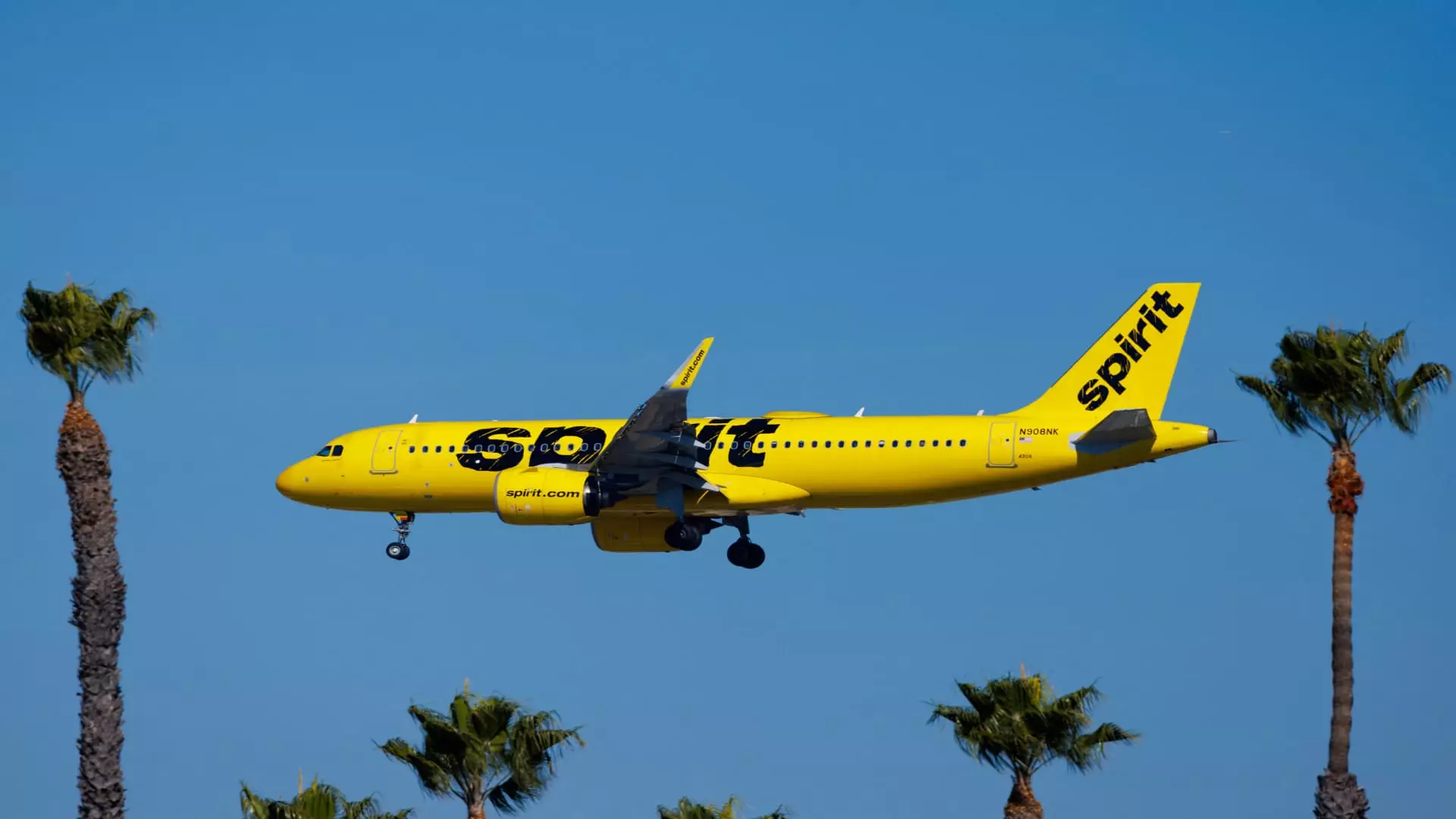In a startling development on Friday, Spirit Airlines experienced a sharp decline in its stock value, hitting an alarming record low amidst reports suggesting the airline is considering filing for Chapter 11 bankruptcy protection. This news comes at a critical juncture, with the airline facing a pressing deadline to renegotiate over $1 billion in debt obligations. The situation marks a significant shift for the once-popular carrier, renowned for its sunshine yellow planes and budget-friendly flight fares.
Beneath its playful facade, Spirit Airlines is grappling with stark realities. Prior to the onset of the COVID-19 pandemic, the airline had built a reputation for profitability and punctuality. Instead of merely transporting passengers, Spirit carved a niche by offering no-frills air travel—appealing to budget-conscious travelers who were willing to forego amenities for lower ticket prices. However, the airline’s business model, characterized by ultra-low fares and extensive add-on fees, has since become a subject of ridicule, attracting the ire of late-night comedians and industry critics alike. To add salt to the wound, major competitors swiftly adopted similar strategies, eroding Spirit’s unique market position.
Compounding Spirit’s woes, a federal judge recently blocked its proposed merger with JetBlue Airways on antitrust grounds. The failed acquisition was touted by both airlines as a vital strategy for competing against larger carriers, but rather than providing a lifeline, it has seemingly left Spirit to fend for itself amidst a host of challenges. The airline is now navigating through a costly Pratt & Whitney engine recall while also grappling with shifting consumer travel behaviors and escalating operational costs.
As the company seeks a path forward, it has explored various financial options. Spirit is now under immense pressure to refinance its $1.1 billion in loyalty-program backed debt, which looms ominously with a due date next September. The looming deadline for renegotiating these secured notes adds to the uncertainty surrounding the airline’s financial stability, which has been shaky since 2020.
The past few years have been harsh for Spirit Airlines, characterized by a series of financial losses, including a staggering $193 million deficit reported in the second quarter of 2023 alone. The airline has made concerted efforts to trim down its expenditures. Actions have included pilot furloughs, significant reductions in flight schedules, and delaying orders for new Airbus aircraft. Notably, recent decisions led to a 17% decrease in capacity growth plans for the upcoming late fall months, according to analyst Brandon Oglenski from Barclays.
In a bid to reassure stakeholders, CEO Ted Christie stated that the company is actively pursuing a comprehensive strategy aimed at stabilizing its financial position, refocusing operations, and ultimately returning to profitability. His note to employees indicated ongoing discussions with bondholders to forge a sustainable solution quickly. Nevertheless, the gravity of the situation cannot be understated, as the airline’s stock plummeted by over 24%, concluding the day at a historic low of $1.69—a staggering decline of nearly 90% over the past year.
Looking ahead, Spirit’s challenges could potentially benefit its competitors. Frontier Airlines, initially set to merge with Spirit before JetBlue’s intervention in 2022, witnessed a stock surge of 16% in response to Spirit’s latest woes. Additionally, other airlines in the industry also saw their stock prices rally, suggesting that investors are keenly aware of the shifting dynamics in the low-cost carrier sector.
Spirit Airlines is at a crossroads where its future hangs in the balance. With significant debt due and dwindling operational capacity, the airline must act swiftly and strategically to navigate this tumultuous period. Whether it can emerge from this crisis as a viable competitor or if it will fall prey to bankruptcy remains a pivotal question in the airline industry’s ever-evolving landscape.


Leave a Reply